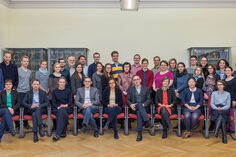Behavioral and neural effects of mothers' history of childhood abuse on the interaction with their child - a study on the intergenerational cycle of violence
Leading investigators: Sabine C. Herpertz, Katja Bertsch, Corinna Reck
Further researchers: Corinne Neukel
Cooperations: Romuald Brunner (Heidelberg), Franz Resch (Heidelberg), Eva Möhler (Heidelberg, Saarbrücken), Beate Herpertz-Dahlmann und Kerstin Konrad (Aachen , Felix Bermpohl und Andreas Heinz (Berlin), Katja Boedecker und Ulrike Lehmkuhl (Berlin), Katharina Braun und Jörg Bock (Magdeburg), Helge Frieling (Hannover)
Duration: 2012-2015
Funding: BMBF joint project: Understanding and Breaking the Intergenerational Cycle of Abuse
Mothers exposed to physical or sexual abuse in childhood frequently close the intergenerational cycle of violence by maltreating their children and threatening the child's development. Mothers with a history of abuse have been described as being more impulsive and showing more aggressive response biases with higher rates of externalizing behavior being found in their offspring. They exhibit low maternal sensitivity with deficits in identifying and responding empathetically to their infant's emotions, characteristics that have also been reported from depressive mothers. Abused mothers are also known to show altered physiological and hormonal reagibility to their crying infants. Similar deficiencies in bonding and affect regulation are also reported in child-abusing mothers and may thus explain how previous victims of violence become CA offenders. This project will investigate the impact of mothers' childhood traumatic experiences on psychological and neurobiological correlates of maternal sensitivity, abuse potential, and emotion regulation as well as on child development and emotional well-being. An intervention with a focus on mother-child interaction will be compared to conventional individual stress management in mothers. This subproject measures neuronal activities in traumatized mothers by means of fMRI during (i) an emotion recognition and sensitivity task and (ii) during script-driven imagery in an anger induction experiment.





